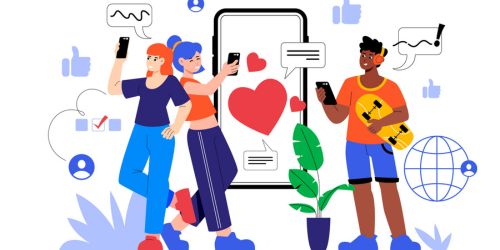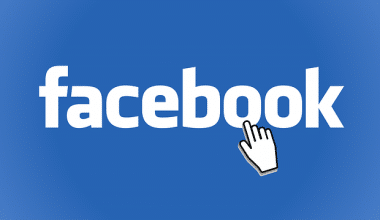You know that saying that the internet never forgets, right? Well, it’s true, and that’s why you should be mindful of how you behave on social media. Just because you’re free to say anything doesn’t mean you should. Here, I have outlined some basic social media etiquette you should observe, along with some best practices for engaging online. Let’s go through them.
Key Takeaways
- Social media etiquette refers to the guidelines companies and individuals use to preserve their reputations online.
- Observing social media etiquette helps create a positive and inclusive online environment, fostering healthy and respectful interactions between individuals and communities.
What Is Social Media Etiquette?
Social media etiquette refers to the guidelines companies and individuals use to preserve their reputations online. Social media channels have become one of the major ways people communicate daily. Therefore, it is important to follow certain rules to avoid infringing on people’s privacy and ruining your or your company’s reputation online.
Why Is Social Media Etiquette Important?

As an individual, a single mistake you make online can drastically affect your reputation. And if you work for an organization, you’re already ruining your company’s potential to make headway online. As a business owner, incorporating social media etiquette into your company will ensure that everyone interacting with your brand will see a respectable and professional business.
Social Media Etiquette Dos and Donts
#1. Do create a separate account for your business contacts
Many jobs require a social media presence, but using your personal social media accounts for your business or work won’t be ideal. Your boss is not interested in seeing you having a beach party as much as he wants you to post work-related content. Also, you wouldn’t want to bore your clients with details about your private life, so you should endeavor to create a new account solely for business.
#2. Don’t behave differently online than you would in person
The same way you wouldn’t just meet anyone casually and ask to be friends, you shouldn’t do that on social media (personally, I don’t accept friend requests from strangers, especially with my personal accounts). This attitude comes across as rude and uncultured. Also, avoid making comments that you wouldn’t make in person. You can never tell who is observing you by the side.
#3. Do stay offline when you’re angry
If you’re in a bad mood, you can save yourself a lot by staying off social media for a while. Consider taking a stroll or engaging in activities that will help you clear your mind. This allows you to navigate social with an open mind, and you won’t be pushed to say things you don’t need to.
#4. Don’t tag indiscriminately
Twitter notifies people who have been tagged, so don’t tag people in negative mentions unless you want to hurt someone (and why would you want to do that?). If your reason for tagging them differs from making your post visible to the person or providing a link to their profile, then there’s no need to tag them.
#5. Do take screenshots responsibly
Before taking screenshots of your chats with someone or their online posts, ensure you do so with their permission. When you text or chat with someone, it’s assumed that the conversation is just between you, and so it’s considered an invasion of privacy if you take screenshots without their permission.
#6. Don’t publicly engage with trolls
You can never get anything out of engaging with trolls. The best you can do when you feel you’re being on social media is to ignore the troll. If the person persists, engage the moderators of the platform to intervene.
#7. Do share responsibly
I know you want everyone to know what’s going on with you. But the truth is, only a few people care. In fact, you friends will appreciate you more when you make your posts moderate instead of just clogging up their space.
#8. Don’t post photos of someone without permission
It’s always a good idea to ask for someone’s permission before you post their pictures or videos online. Yes, they might allow you to take their photo, but it doesn’t mean they want you to post it. You want to be nice, don’t you?
#9. Do use social media as a positive, creative, and uplifting space
Work to make your social media space positive, where your followers feel supported and informed, and where you’re open to customer feedback and questions. Ask questions, practice excellent customer service, give back to your customers, and act respectfully and professionally. You are the one who gets to define what your internet space looks like, so be sure to do it responsibly and thoughtfully.
#10. Don’t forget to fact-check before sharing
Before you share anything on social media, ensure that it has been proven to be true. Spreading inaccurate information might get you the desired engagement, but the effects can be dangerous.
#11. Don’t post when you’ve been drinking
You’ve heard that you shouldn’t drink and drive. Well, you should also not drink and engage on social media. You might say things you were not supposed to, and they will be used against you later. Why take such a risk?
#12. Don’t post captions or comments in all caps
This is a very important social media etiquette; don’t capitalize your words, no matter what. Capitalizing all your words means you’re yelling, and I’m sure you don’t intend to yell out your comments. Even if you did, your audience doesn’t want to know that you’re trolling them. Save that energy, will you?
#13. Don’t delete comments just because you disagree with someone’s point of view
Never try to delete negative comments on social media. If you do receive a negative comment, respond calmly and respectfully with the goal of resolving the issue at hand. This is especially important for your business and brand. When other people see the negative comments and the work you did to resolve the issue, they’ll feel more confident in your business and your customer service.
Social Media Etiquette For Employees

It’s a good thing if your employees are engaged on social media. However, it’s important to outline guidelines to follow to represent your brand effectively. Here are some best practices:
#1. Implement a Company Social Media Policy
Every company should have a social media policy. It’s an integral part of the onboarding process. A consistent, professional online presence is just as important as having strong software qualifications. Get everyone involved, and make sure your social media policy is concise, effective, and clear.
#2. Align personal and job accounts
Always clarify with employees that they represent you and what you stand for, no matter the social media platform they use. Employees should be conscious of creating an authentic and ethical on-brand personality.
If employees share information about your company or branded content, it is best practice to disclose their affiliation and that their personal opinions are their own.
This doesn’t mean there is no room for personal expression because that gives an employee’s profile authenticity. It simply means that employees should proceed with common sense. Their responsibility is to protect the company, follow relevant regulations and disclose their role within the company.
#3. Be clear on what to post and what not to post
Ensure your employees are clear on the type of content to post. As much as they can share their stories online, they should be aware of their limits. Make sure that they have access to pre-approved content when you are creating a content library. This ensures that employees have access to the same resources, information and insights. It also helps your brand voice stay consistent with your intended audience.
Read Also: Brand Advertising: Elevating Your Brand Awareness
Best Practices For Social Media Platforms
Creating content tailored to specific social media platforms requires an understanding of each platform’s unique culture, audience, and features. You can’t use the same professional on Facebook as you do on Twitter. Let’s get into the best practices for engaging on these social media platforms:
Here are some things you should know about Facebook:
- Engagement is key: Facebook thrives on interaction and community. Respond promptly to comments and messages to foster a sense of community.
- Mind Your Frequency: Posting too frequently can overwhelm your audience. Post consistently but at reasonable time intervals. Aim for a balance that keeps you visible without becoming spammy.
- Visual Appeal: Incorporate high-quality images and videos to catch users’ attention in their news feeds.
Tips for Optimization
- Utilize Facebook Groups: Join relevant groups and communities within your niche to connect with like-minded individuals and share valuable content.
- Live Video: Facebook prioritizes live video content, so consider incorporating it into your strategy for increased reach and engagement.
- Insights Analysis: Regularly review Facebook Insights to understand what content resonates with your audience and adjust your strategy accordingly.
Etiquette Guidelines for Twitter
- Conciseness is Key: With a character limit, you cannot just afford to make long and boring tweets. Aim for clarity and get straight to the point in your tweets.
- Use Hashtags Wisely: Hashtags can expand your reach, but don’t overdo it. Aim for a few relevant hashtags per tweet.
- Engage in Conversations: Twitter is a conversational platform. Participate in discussions, reply to mentions, and retweet relevant content.
Tips for Optimization
- Tweet Timing: Experiment with different times of day to find when your audience is most active and likely to engage. Use this to your advantage.
- Visual Content: While Twitter is predominantly text-based, incorporating images, GIFs, and videos can make your tweets stand out in crowded feeds.
- Twitter Lists: Create and subscribe to Twitter lists to organize your follower accounts and stay updated on industry news and trends.
I once tweeted a question about a technical issue I faced with a software tool and received a helpful response from the company’s support team within minutes. This highlighted the power of real-time engagement on Twitter.
Etiquette Guidelines for LinkedIn
- Professional Tone: Maintain a professional demeanor in your posts and interactions. Unlike other social media platforms, LinkedIn is a platform for business networking and industry insights.
- Thought Leadership: Share valuable insights, industry news, and original content to position yourself as a thought leader in your field.
- Personalized Connection Requests: When connecting with others, personalize your invitations to add a personal touch and increase the likelihood of acceptance. Don’t just ask to connect, state your WHY, and when you’re accepted, send a heartwarming ‘thank you’ message.
Tips for Optimization
- LinkedIn Articles: Publish long-form articles on LinkedIn to showcase your expertise and provide in-depth analysis on relevant topics.
- LinkedIn Live: Similar to Facebook, LinkedIn prioritizes live video content. Use LinkedIn Live to host Q&A sessions, interviews, or product demonstrations.
- Engagement Pods: Join or create engagement pods with other professionals in your industry to boost visibility and engagement on your posts.
Etiquette Guidelines for Instagram
- Visual Storytelling: Instagram is all about visual content. Create visually appealing posts that tell a story or evoke emotion.
- Consistent Aesthetic: Maintain a consistent aesthetic and theme across your posts to create a cohesive feed.
- Use Stories Wisely: Instagram Stories provide a casual, behind-the-scenes glimpse into your life or business. Use them to engage with your audience in real time.
Tips for Optimization
- Hashtags and Location Tags: Utilize relevant hashtags and location tags to increase discoverability and reach on Instagram.
- Engage with Followers: Reply to comments, like and comment on other users’ posts, and participate in Instagram Live sessions to foster a sense of community.
TikTok
Etiquette Guidelines for TikTok
- Embrace Creativity: TikTok is a platform for creativity and self-expression. Embrace your unique personality and style in your content.
- Participate in trends: Monitor trending hashtags and challenges and participate in them to increase your visibility and engagement.
- Authenticity Matters: TikTok users value authenticity. Share genuine, unfiltered moments to connect with your audience on a deeper level.
Tips for Optimization
- Keep your TikTok videos short and engaging, typically between 15 to 60 seconds, to maintain viewers’ attention.
- Utilize Effects and Filters: Experiment with TikTok’s wide range of effects and filters to make your videos more visually appealing and entertaining.
- Consistent Posting: Stay active on TikTok by consistently posting new content to keep your audience engaged and attract new followers.
In conclusion, each social media platform has its own unique etiquette guidelines and optimization strategies. By understanding these nuances and tailoring your approach accordingly, you can effectively engage with your audience and maximize your impact across different platforms.
If you’re unsure about which platform to monetize, this video will guide you on how to choose the right social platform for your business:
In Conclusion
Maintaining respect and mindfulness online is crucial when observing social media etiquette, as is actively listening to others. Our digital footprint shapes our online reputation, so curating content thoughtfully is vital. Practicing good social media etiquette isn’t just polite; it’s a strategic investment in building positive connections and a strong online presence. I urge readers to reflect on their social media habits and integrate etiquette principles into their interactions.






